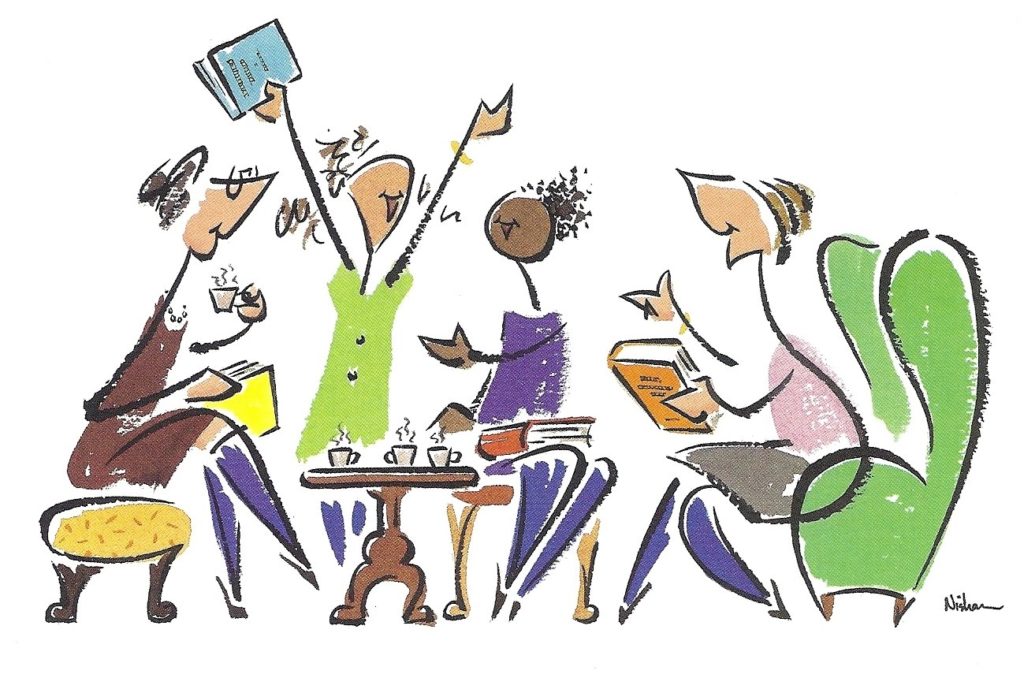Poetry?
We hear from many groups that would like to explore reading poetry but aren’t quite sure how to pick a book, where to start discussion, or how to have fun with it. Not to fear! Read below for tips on how to make poetry fun and how to start your discussion. And don’t forget to check out our post that features some of our favorite poetry books for discussion.
Ideas From Other Reading Groups
1. Read a book by a local poet, and have them come and speak with your group.
2. Read a book by your state’s Poet Laureate, watch a video of them reading their poetry, and see if they would be willing to meet your group.
3. Attend a poetry reading in your community. Consider reading more by the poets you heard and talking about the reading at your next meeting.
4. Take turns bringing in one of your favorite poems to share each meeting – if you don’t have one, look online or go to your local library and see if something stands out. It’s a great way to learn something new about your members!
5. Check out these wonderful publishers from Minneapolis who publish terrific poetry collections each year: Coffee House Press, Milkweed Editions, and Graywolf Press.
6. Read a poetry collection during April which has been designated as National Poetry Month.
7. Read thematically or tonally pertinent poetry during a holiday month, such as a collection by Edgar Allan Poe for Halloween or poetry that celebrates winter and the holidays during December.
8. Listen to poets read their own work! We are so lucky a copy of Dylan Thomas reading Do Not Go Gentle Into That Good Night was saved.
Tips for Reading and Discussing Poems
One of the wonderful things about poetry is that you don’t have to “get” it. Reading and enjoying poetry isn’t just about figuring out a hidden message buried deep in the text. It’s about having an experience of language that includes sound, rhythm, and image. Here are some easy approaches to poetry that your group can take to begin discussion.
Start with sounds.
Many poems gain beauty and meaning through their sound and rhythm. Reading a poem aloud is a great way to experience another dimension of the words. It’s also fun! Take turns reading favorite poems aloud to start off discussion.
Come prepared with questions.
What was your favorite line? Where is the poem set? Who are the characters? What is the poem most concerned with? To what moments in the poem were you most drawn? What moment did you most identify with or understand? What issues or ideas is the poem exploring? The questions you can ask of a poem are endless. Allow each member to contribute a question. You can even put them all in a bowl and take turns drawing to get discussion going.
Talk about your feelings.
What emotion(s) are you left with upon finishing the poem? Are these different than when you started? What words made you feel something? What lines?
What kind of poem is it?
Does the poem rhyme? Describe? Orate? Is the poem written in the form of a letter? Does it remind you of anything else that you’ve ever read?
Discover a new vocabulary.
Time to break out the dictionary! Many poems offer wonderful opportunities to expand your vocabulary and discover new ways of expressing yourself. Take turns exploring words that aren’t as familiar to members of the group, look them up, and read the definitions aloud.
End with praise.
To conclude your discussion of the poem, take time to talk about what everyone liked best. This could be something more general, like the subject matter or the approach, or it could be something specific, like the use of a word, a rhyme, or an image.

